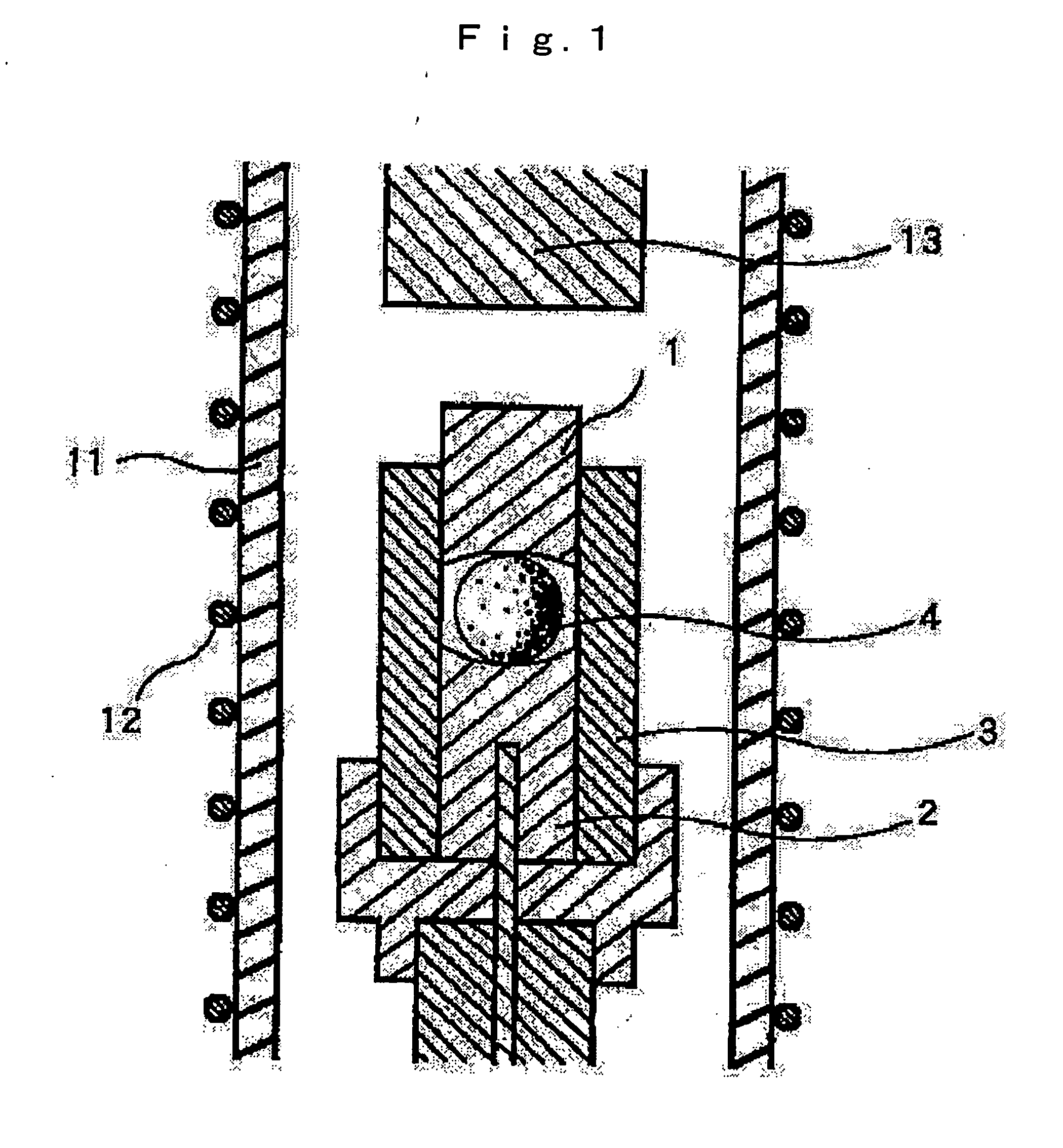Optical glass, precision press-molding preform, process for production thereof, optical element and process for the production thereof
a technology of optical glass and press molding preform, which is applied in the direction of glass tempering apparatus, instruments, manufacturing tools, etc., can solve the problems of high glass transition temperature of conventional glasses such as tasf17 and nbsf32, and is not suitable for precision press molding. , to achieve the effect of low glass transition temperature, low dispersion, and high refractive index
- Summary
- Abstract
- Description
- Claims
- Application Information
AI Technical Summary
Benefits of technology
Problems solved by technology
Method used
Image
Examples
examples
[0109] The present invention will be further explained below with reference to Examples.
[0110] Oxides, hydroxides, carbonates, nitrates, etc., were used as corresponding raw materials of each glass, these raw materials were weighed so that the composition shown in Tables 1 to 3 was obtained after the formation of the glass, and these raw materials were fully mixed. Then, the mixture was poured into a platinum crucible and melted with stirring in an electric furnace in a temperature range of 1,200 to 1,250° C. in atmosphere for 2 to 4 hours. A homogenized and refined glass melt was cast into a 40×70×15 mm mold made of carbon, and a cast glass was gradually cooled to a transition temperature. Immediately thereafter it was placed in an annealing furnace, and annealed at a temperature around the transition temperature for 1 hour, and in the annealing furnace, it was gradually cooled to room temperature. In this manner, optical glasses were obtained. The optical glasses shown in Tables ...
PUM
| Property | Measurement | Unit |
|---|---|---|
| Temperature | aaaaa | aaaaa |
| Temperature | aaaaa | aaaaa |
| Temperature | aaaaa | aaaaa |
Abstract
Description
Claims
Application Information
 Login to View More
Login to View More - R&D
- Intellectual Property
- Life Sciences
- Materials
- Tech Scout
- Unparalleled Data Quality
- Higher Quality Content
- 60% Fewer Hallucinations
Browse by: Latest US Patents, China's latest patents, Technical Efficacy Thesaurus, Application Domain, Technology Topic, Popular Technical Reports.
© 2025 PatSnap. All rights reserved.Legal|Privacy policy|Modern Slavery Act Transparency Statement|Sitemap|About US| Contact US: help@patsnap.com

